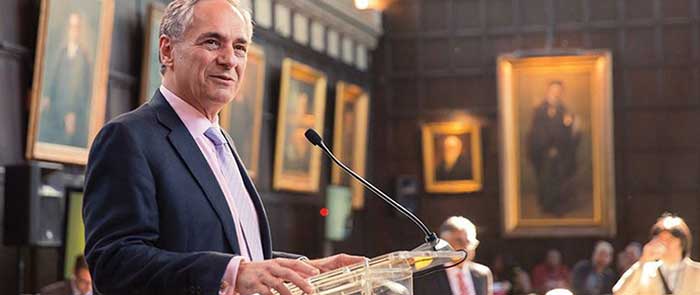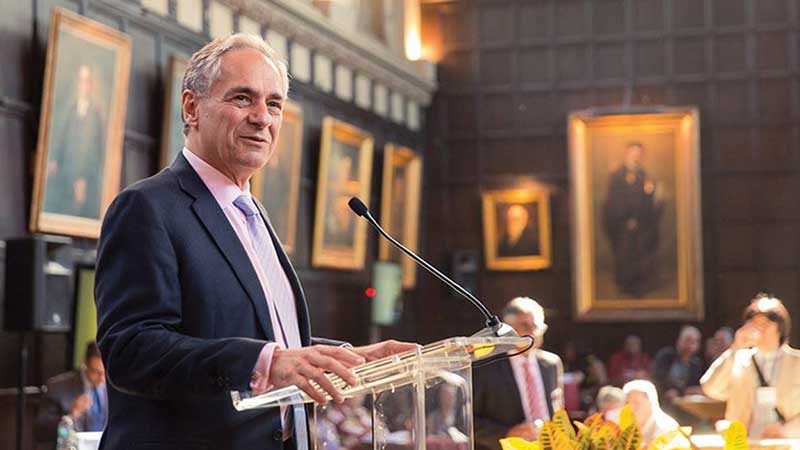
By Lynne Marek
Crain’s Chicago Business
The University of Chicago has invested heavily in recent years to leap ahead of the pack, besting its elite local rival Northwestern University in national rankings, but its weaker financial profile is making it more vulnerable to fallout from the coronavirus pandemic.
The University of Chicago projects a $220 million deficit this year, and it carries $4.8 billion in debt that has mounted in recent years. By contrast, Northwestern’s projected deficit this year and debt load are about half those amounts, despite a larger student body last year.
Both schools plan to slash costs to address revenue shortfalls after the pandemic forced them to refund spring housing and other fees to students who left campus, but a squeeze on revenue is likely to continue this year with increased aid to lure students. As it chops spending, the U of C has more to lose in the fiercely competitive landscape if it can’t address simmering financial stress and maintain its top-tier status in a new COVID environment.
The University of Chicago’s debt is “a heavy load,” says Brad Kelsheimer, vice president for finance and investments at the higher-education-focused Lumina Foundation. “The conclusion you could draw is that Northwestern has a stronger balance sheet and, as a result, it’s better positioned to weather acute financial pressures like this.”
Kelsheimer would know. He was formerly senior vice president for finance and administration at DePauw University. He believes COVID-19 could present a “game-changing moment” for schools as they deploy new instruction strategies in response to the virus and attack the fiscal challenges it spawned.
“In recent years the University of Chicago took advantage of low interest rates to make important investments in academic priorities articulated by our faculty, deans, provost, and president,” University of Chicago spokesman Jeremy Manier says in a statement regarding the school’s debt. “In light of the global financial impact of the pandemic, we are taking painful but necessary steps to stabilize the University’s finances and provide a long-term foundation for realizing the University’s highest academic values for generations to come.”
In a May 11 note outlining cost cuts, Northwestern’s administration said, “We believe that these (cuts) will allow Northwestern to reach the Fall Quarter with room to maneuver in response to future events.”
Even before the pandemic, the U of C was falling short of a goal to balance its budget this year, according to a February report from Moody’s Investors Service. The credit rating agency gives the school high marks for its fundraising prowess, averaging $600 million raised annually; “extremely strong” undergraduate demand, with 81 percent of prospects accepting offers; and multibillion-dollar endowment. But it dings the university for “very high financial leverage” and having less unrestricted available cash than its peers.
The University of Chicago’s undergraduate ranks have grown steadily over the past two decades, and its stature has, too. It grabbed the spotlight last year when it became the most expensive university in the country, drawing $80,000-plus per student in tuition, housing, and other fees for an undergraduate education ranked tied for sixth in the nation by U.S. News & World Report.
But now all universities face one of their biggest tests in decades: How to reopen campuses while maintaining the health and safety of their communities despite the deadly virus. Both the University of Chicago and Northwestern have laid out tentative plans for reopening their campuses in the fall, and there is likely to be more tuition discounting to increase affordability. That won’t help the schools’ fiscal frailty, especially at the U of C.
Red Ink
When University of Chicago President Robert Zimmer disclosed the school’s $220 million deficit in May, he noted that the loss for next year “could be even greater.” That red ink doesn’t even include the university’s medical center, which “faces similar financial challenges,” he said. Even before the pandemic, Moody’s called out the university’s medical center’s “potentially volatile” operations for making up a “very high” half of their combined fiscal 2019 operating revenue.
Zimmer outlined “major actions” in May, including salary freezes for staff and faculty, a staff hiring freeze and a 10 percent cut in non-personnel spending, and then said this month he was docking his own pay 15 percent and subjecting other university leaders to cuts between 8 and 15 percent, furloughing workers and reducing contributions to employees’ retirement plans.
The university’s Laboratory Schools for children wasn’t spared either, with 17 teachers notified this month that they will be laid off next year.
Such moves have repercussions in the competitive world of higher education. Compensating faculty and staff at top industry rates is what allows schools to attract prominent scholars and researchers, and in turn persuade high-caliber students to pay top-dollar tuitions.
Jason Grunebaum, a professor in the U of C’s department of South Asian languages and civilizations who sits on the steering committee of the nontenured faculty union, says his 200-member Service Employees International Union group is in discussions with the administration about its cost-cutting and effort to adapt instruction to the COVID era without sacrificing the school’s offerings. “At this moment, it’s even more important to support our students as much as possible, just as the students have supported the university,” he says.
Tuition Protests
University of Chicago students staged protests over the school maintaining its high tuition this spring despite a shift to online instruction. The university stood pat but said it wouldn’t increase combined tuition and fees this year.
Northwestern has its own troubles. Fitch Ratings downgraded its rating on the university last month, citing weaker cash flow margins and the pandemic. The ratings agency had expected recent strategic investments would eventually show up as increased revenue, but it hasn’t as much as expected, and now NU is paring employees to address a $90 million deficit.
Still, the University of Chicago remains more constrained due to its debt overhang. “More debt automatically erodes your flexibility,” says Fitch analyst Emily Wadhwani. That means more risk for the U of C as it strives to preserve its growth and reputation while adjusting to a new reality.
Published June 12, 2020 in Crain’s Chicago Business
